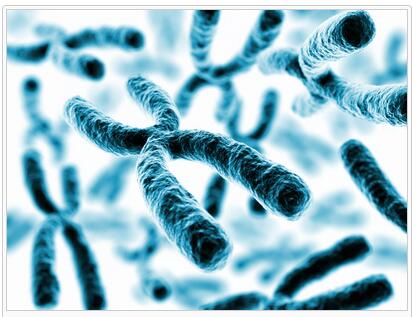When Aicardi Syndrome is a genetic disorder that almost exclusively girls are affected by the. The hereditary disease is considered a serious, incurable disease, with those affected usually suffering from severe mental and physical disabilities. The likelihood of developing this syndrome is very small because Aicardi syndrome is an extremely rare disease.
What is Aicardi Syndrome?
Aicardi syndrome is a genetic disease that affects almost exclusively girls.
Aicardi syndrome is one of the hereditary neurological diseases that only occur very rarely. Doctors assume there are around 400 sick people worldwide, with only girls generally suffering from Aicardi syndrome, while boys are only affected in exceptional cases.
Aicardi syndrome is characterized by a malformation of the brain in which the bar connecting the two halves of the brain is missing (corpus callosum agenesis). There are also malformations of the eyes, the ribs and theSpineas well as epileptic seizures , muscle spasms and developmental delays in the cognitive and motor areas.
The physical malformations of Aicardi syndrome can usually already be detected at the birth of the baby, while the epileptic seizures often only appear at around three to five months of age in babies with Aicardi syndrome. Only 40 out of 100 sick children reach the age of 15. Very few affected patients are older than 25 years, although life expectancy depends on the severity of the Aicardi syndrome.
Causes
Aicardi syndrome is one of the hereditary diseases, so it is genetic. Since the genetic change is on the X chromosome, usually only girls get Aicardi syndrome.
Girls have two X chromosomes, so the genetic defect can be compensated for. Boys have an X and a Y chromosome, so boys affected by Aicardi syndrome are usually not able to survive.
Only when boys have what is known as Klinefelter’s syndrome and therefore have two X chromosomes and one Y chromosome can they develop Aicardi syndrome.
Symptoms, ailments & signs
Aicardi syndrome manifests itself through a number of symptoms. First of all, the syndrome is associated with various malformations all over the body, which can usually be recognized at first glance. Children with Aicardi syndrome develop symptoms similar to those of epileptics. Most of the time, the affected people experience the typical cramps in the first two to four months after birth , in individual cases already in the first days of life.
The malformations mostly affect not only the brain, but also the eyes. The eyeballs are barely developed and abnormalities can be seen on the choroid and retina. This leads to impaired vision and occasional secondary symptoms such as inflammation or pain. If the spine and ribs are affected, nerve pain , sensory disorders and, under certain circumstances, symptoms of paralysis can occur.
If the immune system is involved, there are more infections. There is also an increased risk of developing tumors . Other symptoms such as small hands, an asymmetrical face or skin problems can also occur. The people affected are usually severely mentally and physically disabled. The diagnosis is usually made on the basis of the malformations and the stage of development or the delays in the development of the child.
Diagnosis & course
If Aicardi syndrome is suspected, the treating doctor will in most cases use an imaging procedure such as MRI or CT to examine the brain.
With the help of these two methods, the doctor can diagnose malformations of the brain such as the lack of bars that is typical in Aicardi syndrome. If Aicardi syndrome is suspected, the brain waves are also measured with an EEG . This also gives the pediatrician information about the interaction between the two halves of the brain and about possible epileptic seizures.
In addition, a CSF examination is often carried out on affected children, as Aicardi syndrome can also have a considerable influence on the child’s immune system . The course depends largely on the severity of the disease. In the mostly mentally and physically severely disabled patients, however, the symptoms progressively worsen. A cure for Aicardi syndrome is currently impossible.
Complications
Aicardi syndrome almost always results in serious complications. Already in the first years of life, the movement sequences decrease and there are physical and mental limitations, which are usually irreversible. The eyes are usually damaged from birth; the eyeballs are too small and not fully developed, while the retina and choroid are less developed than in healthy children.
As the hereditary disease progresses , the malformations of the eyes can lead to blindness in those affected. Children with Aicardi syndrome usually develop symptoms similar to those of epileptics and suffer from the typical cramps, especially in the first two to four months after birth. Typical complications in Aicardi syndrome are malformations of the spine and ribs, calcifications of the nerve roots and small hands; Disorders that in the course often lead to serious complications and death of the child.
Most of those affected suffer from the severe complications of Aicardi syndrome from birth. Almost all children who suffer from the hereditary disease are severely mentally and physically disabled. Around 40 percent of those affected reach the age of 16; with an extremely positive course, the 50th year of life can be reached.
When should you go to the doctor?
Aicardi syndrome is usually a very serious and, above all, incurable syndrome. Because of this, the doctor can only treat the patient to a limited extent. In some cases, however, the symptoms can be alleviated so that everyday life becomes more bearable for the person concerned. However, a doctor should also be consulted if Aicardi syndrome leads to epileptic seizures. Although in most cases the doctor cannot treat the cause of these seizures, the symptoms and pain of the patient can be limited.
It is also possible to treat the visual problems so that those affected do not go completely blind. Since mental and motoric regression occurs, these skills must be learned and promoted with the help of therapies. Here, too, treatment by a doctor has a very positive effect on Aicardi syndrome. It is not uncommon for parents and relatives to suffer from psychological complaints. In this case, treatment by a psychologist is recommended so that there are no further psychological upsets.
Treatment & Therapy
Treatment of Aicardi syndrome is very difficult in most cases. Due to the small number of sick people, there is no scientific knowledge about a suitable treatment of the causes.
However, doctors and therapists try to treat the symptoms of children with Aicardi syndrome as well as possible. These include, for example, physiotherapy to prevent scoliosis of the spine, or prescribing medication to prevent or contain epileptic seizures.
Regular occupational therapy , which can be helpful in training motor skills, and special vision training can also help to keep the condition of children suffering from Aicardi syndrome stable.
It is also known that, in addition to good medical treatment, psycho-social care for the entire family affected by Aicardi syndrome is essential. Parents and siblings in particular often need support when a family member is affected by Aicardi syndrome.
Outlook & forecast
As a rule, Aicardi syndrome almost only affects women. This leads to relatively strong physical and psychological restrictions. The intelligence of the persons concerned is also greatly reduced, so that they often depend on the care of other people in their everyday lives.
Aicardi syndrome primarily leads to various malformations that occur in the brain . The patient also suffers from cramps in the muscles and epileptic seizures. Visual disturbances also occur and the patient’s eyeballs are smaller than usual. The spine is also affected by malformations. Due to the weakened immune system, the patient is susceptible to various diseases and infections. As the disease progresses, complete blindness can occur.
Unfortunately, it is not possible to treat Aicardi syndrome. For this reason, only some of the symptoms are limited with medication and various therapies. Often the parents also suffer from Aicardi syndrome due to psychological complaints and depression . The life expectancy of the patient is significantly reduced by the syndrome.
Prevention
Because Aicardi syndrome is an inherited condition, there is an effective way to prevent it. However, since it is a very rare genetic disease, the likelihood of being affected by Aicardi syndrome is not very high.
Aftercare
Because Aicardi syndrome is a genetic condition, it cannot be fully treated. Therefore, only a purely symptomatic treatment is possible, whereby the affected person is mostly dependent on lifelong therapy. Since the disease is hereditary and can also be passed on, genetic counseling is very useful if you want to have children in order to avoid the recurrence of Aicardi syndrome.
Since those affected are usually dependent on taking medication, care should be taken to ensure that they are taken regularly. Possible interactions with other drugs must also be considered in order to avoid complications. In most cases, with Aicardi syndrome, the patient is also dependent on physical therapy.
The exercises from this therapy can usually also be performed in your own home, which increases the mobility of the body. In general, the loving care of family members and friends also has a very positive effect on the course of the disease. Contact with other sufferers of Aicardi syndrome can also be useful. The syndrome does not reduce the patient’s life expectancy. The life of the person affected is, however, much more difficult.
You can do that yourself
Aicardi syndrome sufferers must always seek medical treatment. Various self-help tips and home remedies support conventional medical measures and make it easier to deal with the disease.
Dietary and sporting measures are usually worked out together with the doctor. A healthy and balanced diet can alleviate certain symptoms such as common skin problems. The recommended physical and occupational therapy exercises can be supplemented by the patient with, for example, yoga , Pilates or strength training. Regular exercise not only helps against dwindling motor skills, but also has a positive effect on the psyche. This can make managing Aicardi syndrome easier in the long term.
In general, those affected have to try to accept the disease and its consequences. This is achieved by attending self-help groups and through therapeutic advice. Which options are available in detail can be inquired at the responsible specialist clinic or directly with the treating doctor. In consultation with the doctor, the necessary aids such as visual aids or a wheelchair should also be requested from the insurance office at an early stage . Depending on the degree of the illness, efforts should be made to find an apartment suitable for the handicapped as soon as possible.


